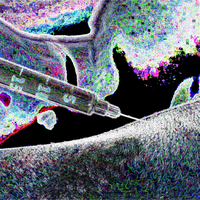| GBL | |
|---|---|
| Molecular structure via molpic based on CDK |
| Physical properties [] | |
|---|---|
| Molecular mass | 86.09 g/mol [1] |
| Density | 1.1286 at 59 °F (NTP, 1992) - Denser than water; will sink g/cm3 [1] |
| Appearance | Oily liquid [1] |
| Odor | Pleasant odor [1] |
| Melting point | -49 °F (NTP, 1992) [1] |
| Boiling point | 399 to 401 °F at 760 mmHg (NTP, 1992) [1] |
| Decomposition | When heated to decomposition it emits acrid and irritating fumes. [1] |
| Solubility | greater than or equal to 100 mg/mL at 55 °F (NTP, 1992) [1] |
| Predicted LogP | -0.6 [1] |
| Structural Identifiers [] | |
|---|---|
| Molecular formula | C4H6O2 [1] |
| IUPAC name | oxolan-2-one [1] |
| SMILES | C1CC(=O)OC1 [1] |
| InChI | InChI=1S/C4H6O2/c5-4-2-1-3-6-4/h1-3H2 [1] |
| InChIKey | YEJRWHAVMIAJKC-UHFFFAOYSA-N [1] |
| Toxicity [] | |
|---|---|
| LDLo | Mouse: - parenteral: 1600 mg/kg Rabbit: - intravenous: 500 mg/kg |
| LD50 | Rat: - oral: 1540 mg/kg - intraperitoneal: 1 gm/kg Mouse: - oral: 1460 mg/kg - intraperitoneal: 1100 mg/kg Guinea pig: - skin: >5 gm/kg |
| LC50 | Rat: - inhalation: >5100 mg/m3/4H |
γ-Butyrolactone
(Redirected from butyrolactone)
γ-Butyrolactone (also known as Butyrolactone, dihydrofuran-2(3H)-one, 4-Butyrolactone, 4-Butanolide, 1,4-Butanolide, 2-Oxolanone, 4-Hydroxybutyric acid lactone, Butyrylactone, 4-Deoxytetronic acid or Butyryl lactone) is a
Chemistry
Stereochemistry []
γ-Butyrolactone is a achiral mixture
| Anodyne Usernotes [] | |
|---|---|
| magnus / γ-Butyrolactone via Oral | shorter onset than 1,4-butanediol, identical effects |
See also []
External links []
References []
National Center for Biotechnology Information. PubChem Compound Summary for CID 7302, γ-Butyrolactone. Accessed September 1, 2025. https://pubchem.ncbi.nlm.nih.gov/compound/7302
U.S. Food and Drug Administration; National Center for Advancing Translational Sciences. γ-Butyrolactone. UNII: OL659KIY4X. Global Substance Registration System. Accessed September 1, 2025. https://gsrs.ncats.nih.gov/ginas/app/beta/substances/OL659KIY4X
 Anodyne
Anodyne